2022 Fox 34 Fork
Test Location: Montana
Test Duration: 4.5 months
Stanchion Diameter: 34 mm
Travel Options: 130, 140 mm
Wheel Size Options: 29”
Version tested: Factory Trim, 29”, 44 mm offset, 130 mm travel
Blister’s Measured Weight (as tested, cut steerer): 1,820 grams
MSRP (as tested): $1,019
Bolted to: Pole Taival & Transition Spur
Reviewer: 5’9”, ~160 lbs / 175 cm, 72.5 kg
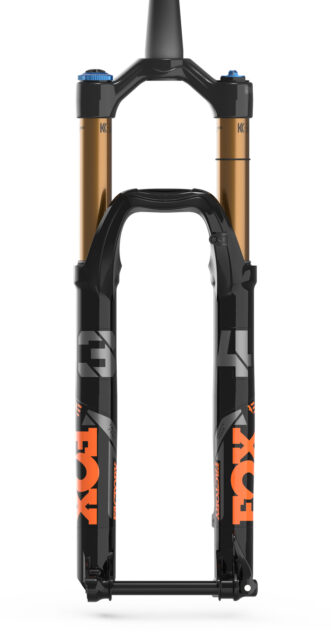
Intro
For model-year 2022, Fox gave their 34 fork a substantial makeover, with some revisions that we saw last year in the 36 (and 38). The 34 is still positioned as an XC / Trail fork, and is still available in two flavors — the lighter 34SC (Step Cast) and the more general-purpose, Trail-oriented 34, which I’ve been spending time on.
The 34 holds down the middle ground between the lighter, XC-race-oriented 32, and the more substantial 36 and 38. But increasingly, these lines are getting a bit blurrier. There are a number of racers on the World Cup XC circuit that are opting for the 34SC, especially on some of the rougher and more technical courses. And the increasing popularity of “downcountry” bikes with shorter-travel suspension and geometry that’s inclined to get rowdy means that 120-130mm forks that can handle fairly rough descents are an attractive proposition.
And that (was) my exact intent with the 34 — at 130 mm, it seemed like the perfect option to slightly over-fork the Transition Spur that I ordered. The complication, of course, is that this is 2021 and the Spur is a few months late in arriving. So while I waited for that attractive piece of carbon to show up, I stuck the 34 on my trusty Pole Taival — a steel hardtail that, in typical Pole fashion, is slack, long, and perfectly happy rallying around on techy trails.
I’ve now been able to spend time with the 34 mounted on both the Taival and Spur, so it’s time for the full review:
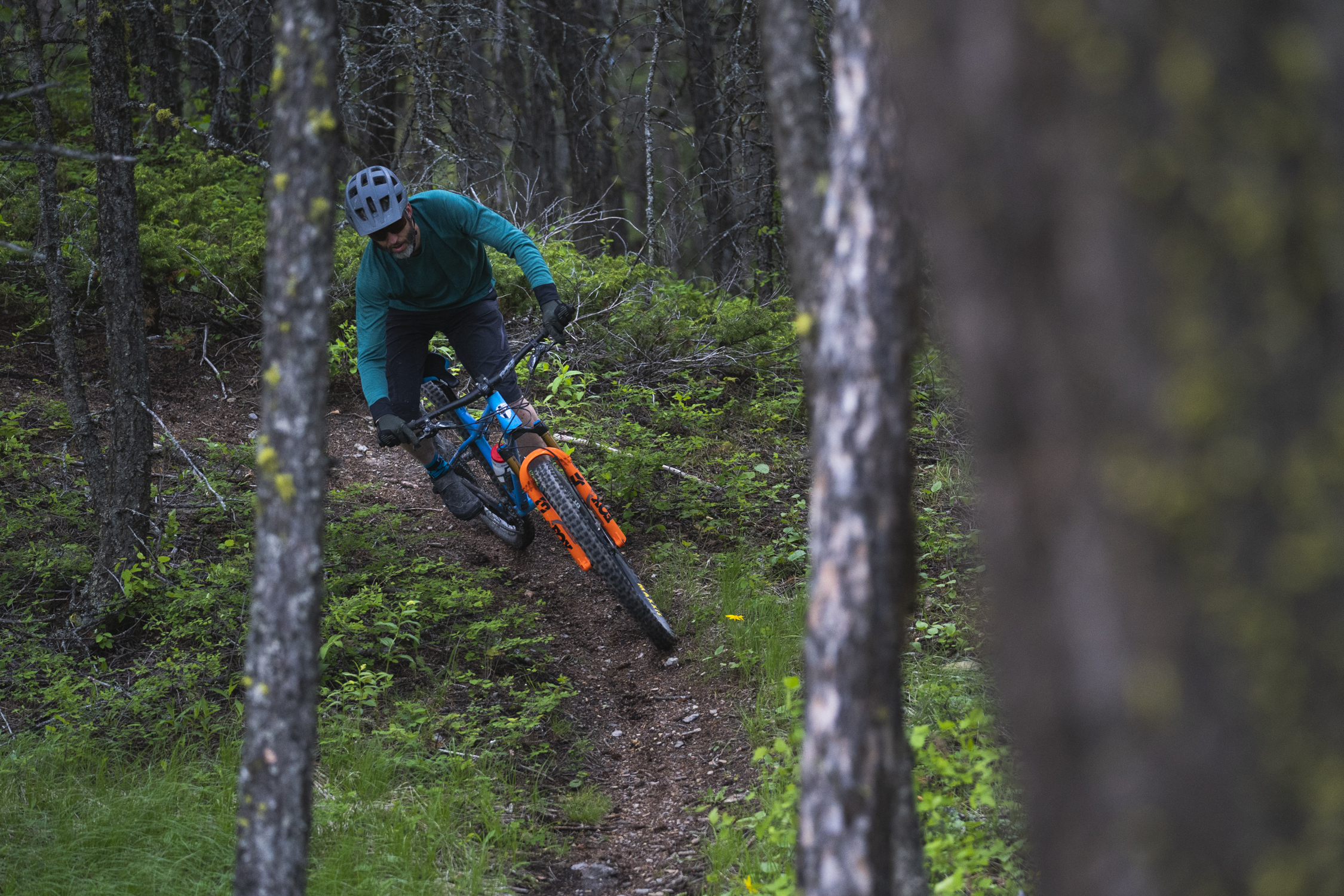
What’s New and Different
The biggest change for the 34 in 2022 is new castings. The lower legs get a few changes that we’ve seen previously on the latest Fox 36 and 38 forks. Visually, the biggest change is a redesigned arch that’s intended to be stiffer, and it’s also angled a bit farther forward so that there’s more clearance for the frame’s headtube when the fork is fully bottomed out. And of course, those tweaks to the arch still retain good tire clearance — it’ll fit a 2.6” without issue.
The new 34’s lower legs also get bypass channels similar to the 36 and 38, but to save a bit of weight, the 34 lacks the bleeder valves found on the bigger forks. The point of the bypass channels is to allow air to easily move around the lower legs as the fork compresses; as the fork approaches bottom-out, the ambient air in the bottom of the leg is getting compressed. Especially for lighter riders, that ramp-up can actually make it hard to use the fork’s full travel. The bypass channels in the lower legs allow that air to move around and effectively occupy a larger space, thus limiting how much unwanted air pressure is built up down there.
Also of note is that the 34 is now only available for 29” wheels. Call that Fox’s analysis of where this travel class is heading, but if you’re looking for a 27.5” fork, you’ll have to look elsewhere. The 34 is still offered in Fox’s normal offsets (44mm and 51mm), and is available with either a QR thru-axle or the Kabolt bolt-on axle (tested), which is a good bit lighter. The 34 doesn’t get the floating axle hardware found on the 36 and 38, presumably as a weight-saving measure. And as an indicator of Fox’s “aggressive” intentions for the 34, the fork features a direct post mount for 180 mm rotors (although the Step Cast version has a 160 mm mount).
The Air Spring
The air spring in the 2022 Fox 34 is still their Evol unit, which isn’t new for 2022. This year does, however, bring an enlargement of the negative air spring, which Fox claims will increase mid-stroke support. While that claim might sound slightly suspicious, the rationale is usually that a larger negative air chamber allows you to run higher pressures in the positive chamber (which increases mid-stroke support and bottom-out resistance) while still retaining a supple early stroke to smooth out small bumps.
Beyond the modifications to the negative air chamber, the new 34’s air spring feels quite familiar. The same 34 mm tokens as the previous version can be used to modify the positive air chamber volume under the top cap. And on 34SC models, tokens can also be added to the negative air chamber to give the fork a firmer, “racier” feel (although adding those requires pulling the fork apart).
The Damper
As with prior model years, the 2022 iteration of the 34 is available with an assortment of dampers. Factory models are available with Fox’s Grip2 or Fit4 dampers, although the 34SC Factory is only available with the Fit4 option (the Fit4 damper is a good bit lighter than Grip2). Performance Elite models are only available with the Fit4 damper, while Performance models come with the lower-end Grip damper.
My test fork (34 Factory) came with the Grip2 damper, which is similar to the damper found on the 36 and 38. And as with my past experiences with Grip2, it’s a fantastic performer — it’s very adjustable and super smooth in all situations. You get 8 clicks of high-speed compression adjustment, 16 clicks of low-speed compression, 8 clicks of high-speed rebound, and 16 clicks of low-speed rebound. Both the high-speed compression and rebound circuits also utilize Fox’s VVC unit, which is an ingenious way to adjust the damping shim stack that makes the damper feel noticeably smoother. You can check out Jordi Cortes’ full explanation here.
And if all of those adjustments sound vaguely familiar but you have no idea how to even begin setting up the fork for yourself, Fox includes a nice little sticker on the fork to give you some starting positions for both air pressure and damper adjustments. And in my experience, the chart is reasonably close to where I ultimately end up.
The Bottom Line (For Now)
The 34 has long been a popular option for riders on relatively short-travel Trail bikes, and the updates to the 2022 model should make it an even stronger contender there. We’ll be spending a lot more time on the new 34 in the months to come, but for now, Blister Members can check out our Flash Review of the new 34. Stay tuned for a full review to come.
Full Review
The last time I checked in with the Fox 34, I’d spent about a month with it mounted up on my hardtail, and I was fairly impressed with the fork. Since then, the Transition Spur that I ordered last year finally showed up, so I got to mount up the 34 on the exact kind of bike that it’s designed for. I’ve spent most of the summer ripping around on that setup, so here’s how the 34 has fared.
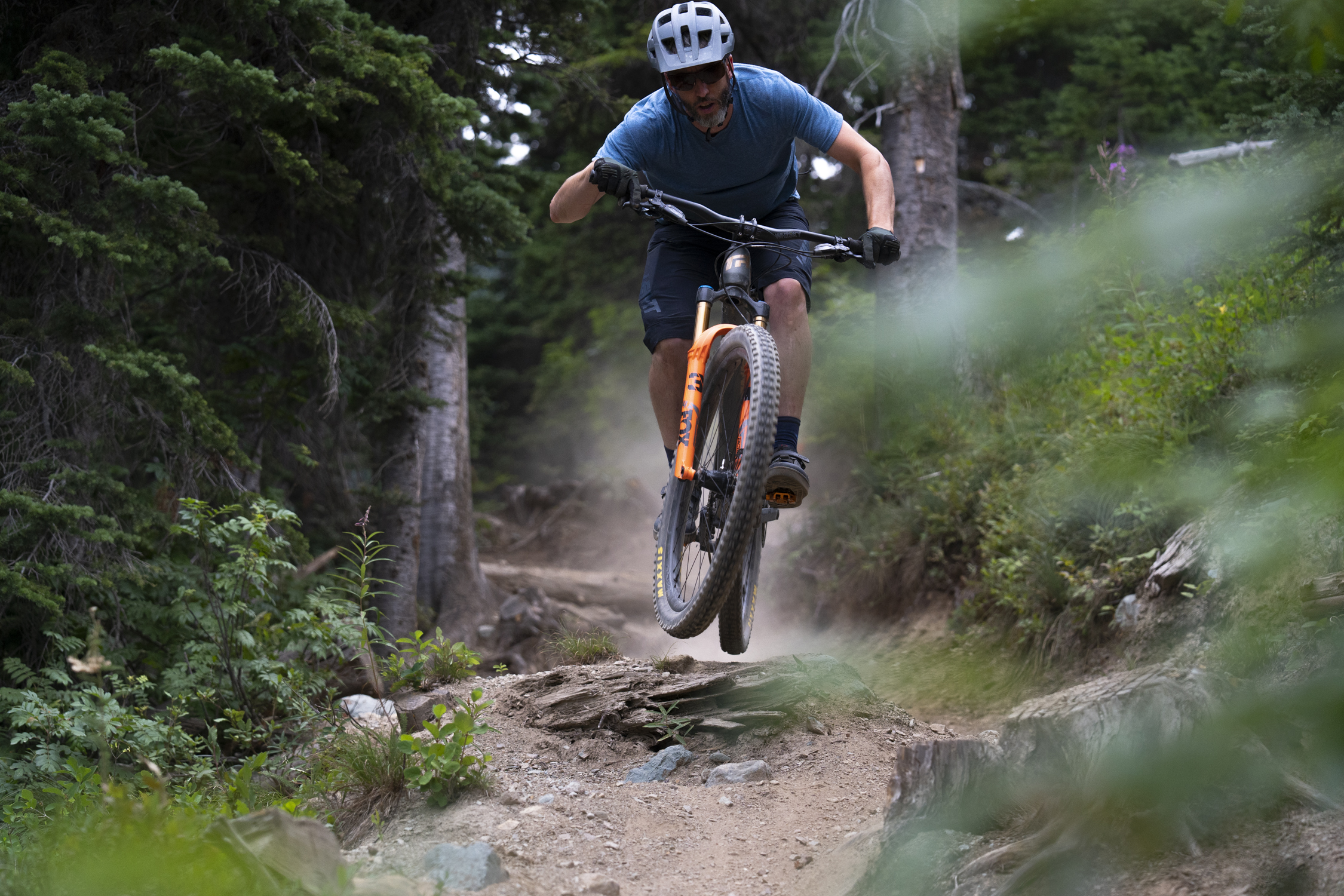
Setup & Overall Performance
I still have the 34 set up in the same basic configuration — it has 130 mm travel (10 mm more than the stock fork on the Spur), and I’m still on the “regular” 34 as opposed to the lighter weight Step Cast version.
On the hardtail, I generally ride with a bit more weight over the front of the bike, and I found I needed the fork to feel more progressive. So on that bike, I added a volume spacer (so I had 3 installed), and I was running the pressure at about 83 psi. On the Spur, I can ride with a more neutral stance, so I went back down to 2 volume spacers (which is how the fork comes from the factory). I did, however, keep the pressure about the same (actually slightly higher, at 85 psi).
On the hardtail, I was running 6 clicks of LSR, 5 clicks of HSR, 11 clicks of LSC, and 2 clicks of HSC (all from fully closed). On the Spur, my rebound settings stayed the same, but I’m running a little less high-speed compression.
With that setup, the 34 does a really nice job of offering small-bump sensitivity while still not getting crushed on bigger impacts. I ride the Spur on a pretty wide variety of trails; one day I’ll take it on a long backcountry ride where I’m more concerned with keeping things comfortable over the course of an 8 hour day, while another day I might catch a quick chairlift bump at the local bike park and run it down some jumps and trails that are generally beat to shit.
Getting a short-travel fork like the 34 to work well in both of those situations can be a bit tricky, but for the most part, the 34 does an admirable job. And I think much of the credit here goes to Fox’s Grip2 damper — it’s been smooth in every situation I’ve thrown at it, whether it be slowly trudging over miles of alpine trail or getting absolutely crushed by late August braking bumps on a bike park “flow” trail. I also tend to go up or down 2-3 clicks on both LSC and HSC depending on the trails I’m riding that day. I’ll usually run a bit more compression on my local jumpy, techy trails, and a bit less compression on backcountry rides where I’m keeping it a bit mellower.
A lot of the changes to the 34 for 2022 had to do with the lower legs and chassis. And it seems to me that those changes paid off — the 34 holds up well, and I’ve been a little bit surprised by how well it tracks for a relatively lightweight fork. The Spur is a short-ish travel rig, but it has geometry numbers that approach some Enduro bikes. And that has led to a number of situations where I’ve let the bike get going quicker than I probably should have on a trail I didn’t know well, which inevitably resulted in me running through some techy rock gardens, at speed, on a line that turned out to be thoroughly wrong. I can think of at least three times where I did exactly that, saw a big impact coming, did the “oh shit, this is gonna kinda suck” brace for impact, and then… I just kinda rolled through it. The 34 took the brunt of it without fuss.
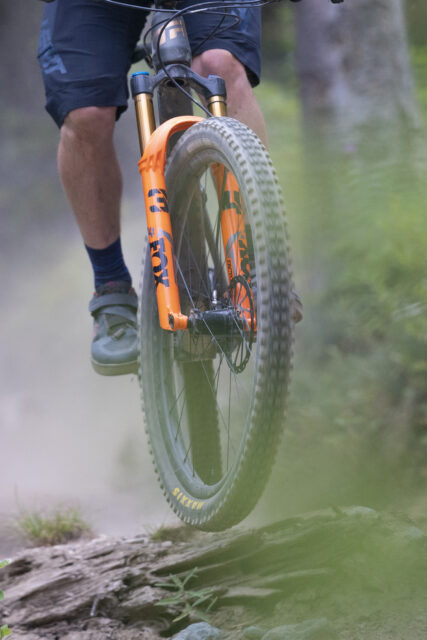
Now, I don’t want to make the 34 out to be something it isn’t. I have a Fox 38 on my Specialized Enduro, and there is no question whatsoever that the 38 crushes through rough chunder far, far better than the 34. But for what the 34 is (which is, among other things, about 2 lbs lighter than the 38), the 34 does a really good job.
Maintenance / Issues
I have about 4.5 months on the 34 at this point and I have nothing to report. It’ll probably get a lower leg service at the end of this season, but it’s not showing any noticeable signs of needing service at this point.
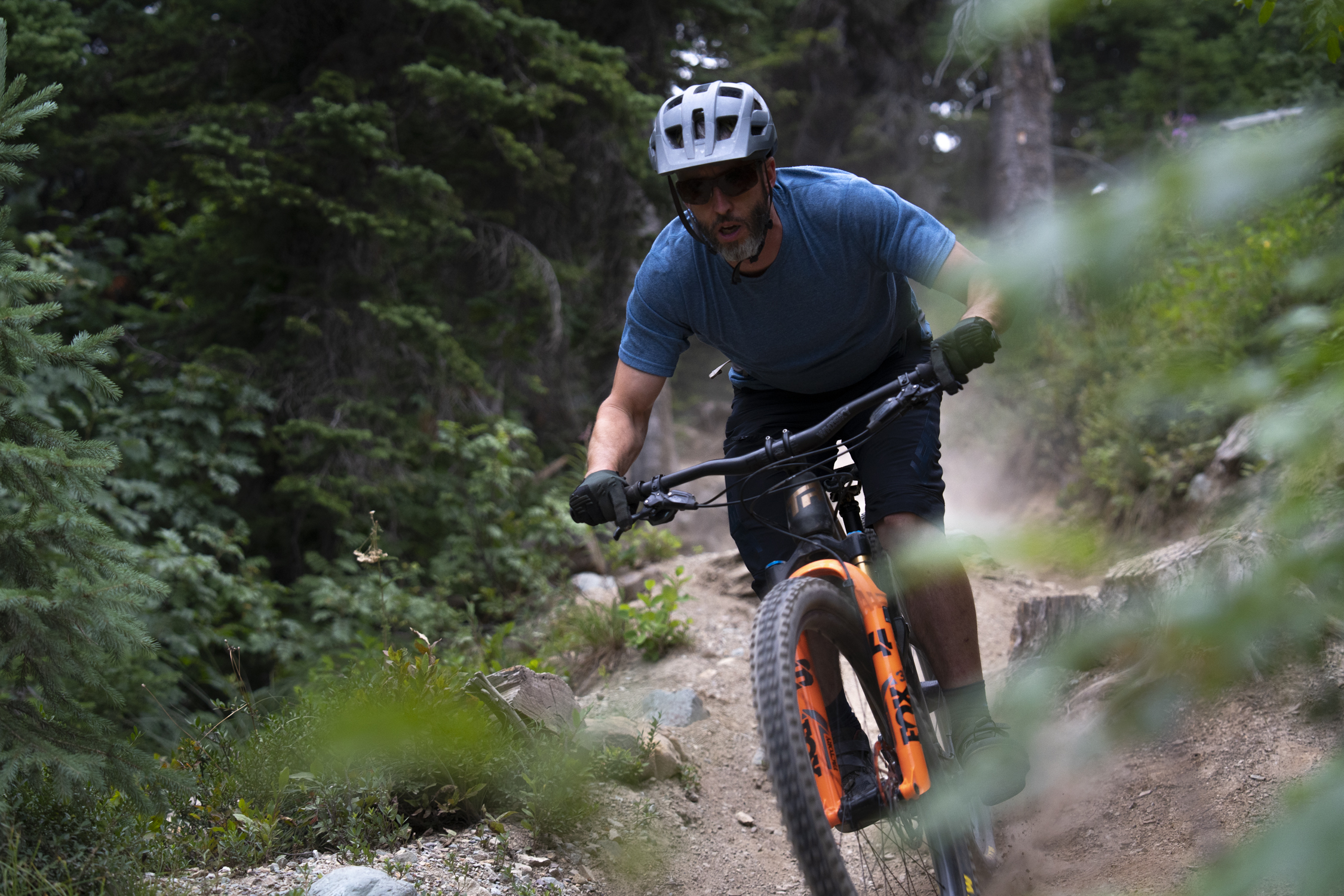
Comparisons
It’s a pretty good time to be in the short-travel fork market because there are a number of good options, and they’re reasonably different in small but noticeable increments.
There’s the Fox 32 Step Cast, the Fox 34 Step Cast, and a few variations of the Rockshox SID — all of which are lighter than the 34 I rode. Unfortunately, I haven’t spent much time on the current versions of any of those forks, so I can’t give a direct comparison to the 34. But it’s safe to say that all of those options are lighter than the 34, all are flexier than the 34, and all are going to be somewhat less suited to descending than the 34. I’d be looking at those forks on a bike with 120 mm travel or less, where weight was a significant priority.
At the other end of the spectrum that competes with this fork are the Fox 36 and RockShox Lyrik. The 36 doesn’t really overlap with the 34 — the max travel for the 34 is 140 mm, and the minimum travel for the 36 is 150 mm. (Or at least stock — Fox does still offer 36 air shafts down to 130 mm aftermarket.) The Lyrik slightly overlaps, with a minimum travel of 140 mm. Both the 36 and the Lyrik are substantially “more” fork than the 34. They weigh more, they’re stiffer, and they generally handle big impacts better (while being a bit less supportive for pumping and out of the saddle sprinting). Personally, on any bike with a 150 mm fork, and some bikes with a 140mm-travel fork, I’d be looking at these options.
And that leaves the closest competitor to the 34 — the Rockshox Pike. The Pike is an excellent fork, but it’s definitely distinguishable from the 34. The Pike is a bit heavier, and a bit stiffer. For that reason, it works a little better in the longer-travel configurations. On the other hand, the 34 has a better damper and handles a wider array of impacts with a bit more grace. So which would I choose? For a 130 mm fork, I’d take the 34. I love the Grip2 damper, it’s a lighter fork, and in a relatively short-travel configuration like that, I’m ok with the 34 being a smidge less stiff than the Pike. For a 140 mm fork, I’m a bit more torn but I’d probably still opt for the 34 (for the same reasons), although this becomes a closer call. If I was trying to keep the build as light as possible, I’d go with the 34. If I wanted to build a mini-Enduro bike and was less concerned about weight, I’d go with the Pike (or more realistically, I’d skip the Pike and go with a 140 mm Lyrik).
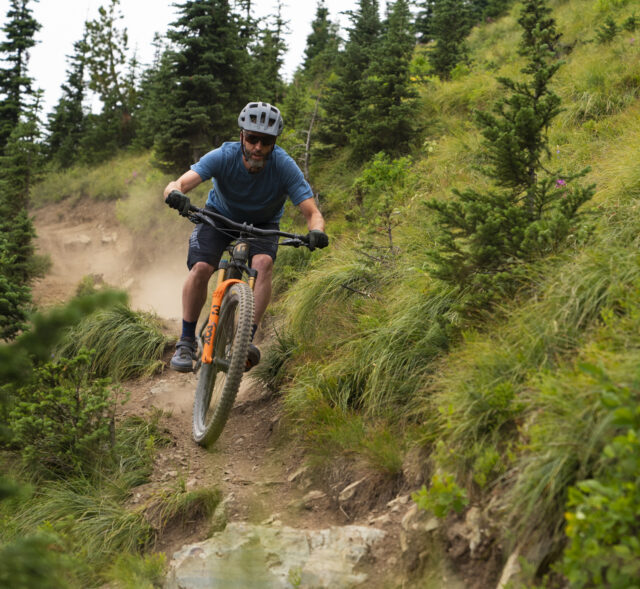
Bottom Line
My expectations are always lowered a little bit for short-travel suspension platforms — I ride them on a lot of the same trails and run them into a lot of the same bumps as my longer travel bike. So I’m asking a lot of the fork, but it’s working with less travel, less stiffness, less weight, less oil volume in the damper, etc.
Despite that, the latest Fox 34 takes it all in stride, and with minimal fuss. It’s tasked with bridging the gap between XC forks that prioritize weight savings and heavier forks that prioritize perfectly controlled bump absorption. And I’d say the 34 hits that middle ground really well — it’s respectably light, but the suspension is still impressively smooth and controlled. It smoothes out the little bumps and does a surprisingly good job of dealing with the big ones. All of that makes it one of the strongest contenders in that ill-defined category of short-ish travel Trail / aggressive XC bikes.

The Spur is an interesting bike choice for which to base the fork comparisons. Transition recommends not increasing its front travel (120). And depending on who you ask, that new SID is as stiff as the 34. The Pike seems like the natural comparison, the Spur just doesn’t seem like the right bike for testing (even though over-forking a Spur sounds like really nice idea).